From Cassano to the USA, beating blindness
The story of Andrea Giani, a researcher at Harvard Medical School; he works with nanotechnologies to treat diseases of the retina. “I’m studying here, because there are no resources in Italy.”
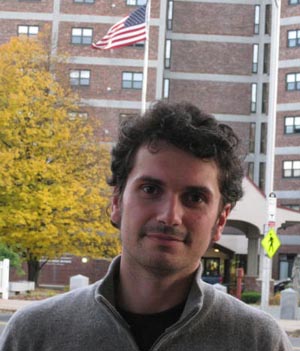 Until a few years ago, nanoparticles and stem cells were two terms that were almost entirely unknown. Today, they represent the frontier of medicine, and not a day goes by when results of some research are not published, on arguments that appear to differ radically from everyone’s experiences, that will revolutionise life and, above all, will enable us to deal with suffering and disease in quite different ways.
Until a few years ago, nanoparticles and stem cells were two terms that were almost entirely unknown. Today, they represent the frontier of medicine, and not a day goes by when results of some research are not published, on arguments that appear to differ radically from everyone’s experiences, that will revolutionise life and, above all, will enable us to deal with suffering and disease in quite different ways.
Sceptics need only consider the discovery of penicillin. Before this drug was discovered, people would die of pneumonia.
One of the world’s most important centres for scientific research is the Harvard Medical School, in Boston. Last March, Andrea Giani went there to study retinopathies, which are the primary cause of blindness. Thirty years old, with a degree in medicine from Milan, Giani worked at the “Sacco” Hospital, and had already opened his own surgery in his home town of Cassano Magnago. It was then that his passion for research drove him overseas. “When my teacher, Giovanni Staurenghi, asked me to continue his work, I couldn’t say no. It was an incredible opportunity.”
And what do you do here?
“I research diseases of the retina, where there is macular degeneration. I can’t work as a physician, because I would have to pass a number of exams. However, the plan is to acquire additional skills on the subject, and then to return to Italy. So, I devote my time to basic, laboratory research, testing a therapy with nanoparticles that can reconstruct the diseased blood vessels, and, at the same time, testing a gene that causes the diseased cells to die alone.”
And why did you come here to Harvard?
“This is a centre of excellence. Prof. Staurenghi worked here with Joan Miller, who had discovered photodynamics, which was the only therapy before the discovery of anti-VEGF drugs, which stop wet retinopathies. The previous therapies, where the diseased parts were burnt away, were disastrous. Today, at least with drugs, the degeneration can be stopped.”
And where do nanoparticles come in?
“Today, we know a great deal from a medical point of view, but the smaller the scale, the more delicate things become. This is very true for cells. Often, in the case of diseases, it’s as though we were using a cannon to shoot at a gnat. We might hit it, but, in the meantime, we’ll cause plenty of damage elsewhere. Nanoparticles enable us to target on a smaller scale, and, thereby, avoid these problems.”
And what about stem cells?
“These are another “trend” in medical research, but they have great potential, particularly when applied to retinopathies, which are degenerative diseases, where, thus far, we have only been able to block the progress of the disease, and, in the case of the dry disease, we don’t have any actual therapies. The idea is to look for another answer for treatment in stem cells.”
And at what point are you?
“Two months ago, in Nature, a study was published that showed that embryonic stem cells can develop into photoreceptors and into retinal pigmented epithelial cells. This was an important discovery in treating macular degeneration, and I think that we can show the same with amniotic stem cells.”
Was it at this point that the collaboration with Biocell began?
Yes. It was by chance, because they came here to Boston just when we were starting to think about developing research on amniotic stem cells. We had a few meetings, and then there was a call for research bids by the Italian Ministry of Health, which involved the Polytechnic of Milan, the company Toma, from Busto Arsizio, and Biocell, here in Boston, all in collaboration with the Harvard Medical School, who are cosponsoring the research. In this initial phase, we would like to test the same protocol used for embryonic stem cells on those obtained from the amniotic fluid, because we are convinced that these are safer and more stable. Initially, we are going to experiment on animals, and, if the results are satisfactory, we’ll be able to experiment on man.”
And what is your timeframe?
“There are signs that results are not far off. Possibly within the next few years.”
Why is it that, if you want to do research, you have to go abroad?
“It’s a question of economic resources and culture. There are many things that you wouldn’t be able to do in Italy, where there are only three, or four research centres of the standard of the United States, and each one of these has only a few ongoing projects. You need only consider that in Boston, there are so many universities, and each one of these has twenty or thirty funded projects. Researching with the animal model, which is essential if you want to make progress, costs a great deal, also because of the care you must give the animals themselves.”
Are there a lot of Italians?
“Not many. In my laboratory, I’m the only one, with a lot of Japanese, Greeks, a few Germans, Koreans, Irish and one or two Americans.”
Where do you live, and how do you like being here?
“I share an apartment in the centre of Boston. The town is very beautiful, and I settled down immediately. It’s an open-minded, multiracial situation. In the hospital, it’s easy, because there is great respect. I miss the clinical side a little, because I can only do that here if there’s a US physician with me, but still, I’m gaining extraordinary experience.”
How often do you go back to Italy?
“Twice a year. I even opened my own surgery in Cassano, but I’ve got a colleague working there. Next year, I’m going to take part in two important conferences, in Brussels and in Milan, and this will be a good opportunity to stop off at home.”
La community di VareseNews
Loro ne fanno già parte
Ultimi commenti
lenny54 su I no vax sono tornati a colpire in provincia: imbrattati i muri della redazione di Varesenews
malauros su I no vax sono tornati a colpire in provincia: imbrattati i muri della redazione di Varesenews
Felice su I no vax sono tornati a colpire in provincia: imbrattati i muri della redazione di Varesenews
PaoloFilterfree su A Varese Salvini prova a ricucire passato e futuro della Lega, ma Bossi non c'è
axelzzz85 su A Varese Salvini prova a ricucire passato e futuro della Lega, ma Bossi non c'è
elenera su A Varese Salvini prova a ricucire passato e futuro della Lega, ma Bossi non c'è

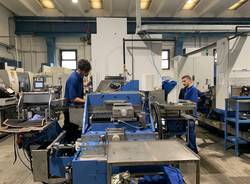

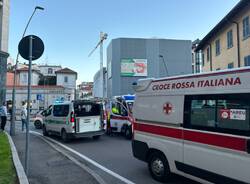

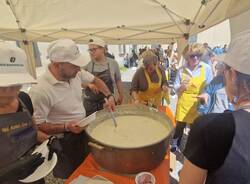





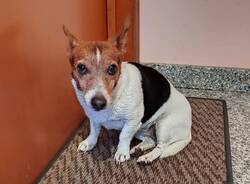


Accedi o registrati per commentare questo articolo.
L'email è richiesta ma non verrà mostrata ai visitatori. Il contenuto di questo commento esprime il pensiero dell'autore e non rappresenta la linea editoriale di VareseNews.it, che rimane autonoma e indipendente. I messaggi inclusi nei commenti non sono testi giornalistici, ma post inviati dai singoli lettori che possono essere automaticamente pubblicati senza filtro preventivo. I commenti che includano uno o più link a siti esterni verranno rimossi in automatico dal sistema.